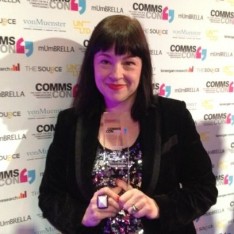Barnardos’ Irene Saunders: How can an agency be an expert if they’re just briefed by a client?
 Former CommsCon publicist of the year Irene Saunders is senior publicist for Barnardos Australia. Mumbrella’s Miranda Ward spoke to Saunders about the pros and cons of working clientside compared to an agency.
Former CommsCon publicist of the year Irene Saunders is senior publicist for Barnardos Australia. Mumbrella’s Miranda Ward spoke to Saunders about the pros and cons of working clientside compared to an agency.
What attracted you to working in-house as opposed to working for an agency?
The reason I got into promotions, as it was called back in the day, was because I had a passion for music. I needed to work for a record company in order to be close to music. It never crossed my mind to work for an agency because I wanted to work with artists in the music industry so I became a publicist within a record label. For me it’s always been about what you’re promoting not just the process of what you’re promoting, what you’re promoting has to be something you’re passionate about.
Everything I’ve worked in I had to believe in and immerse myself in rather than just promoting a different product or brand every day, that never appealed to me.

